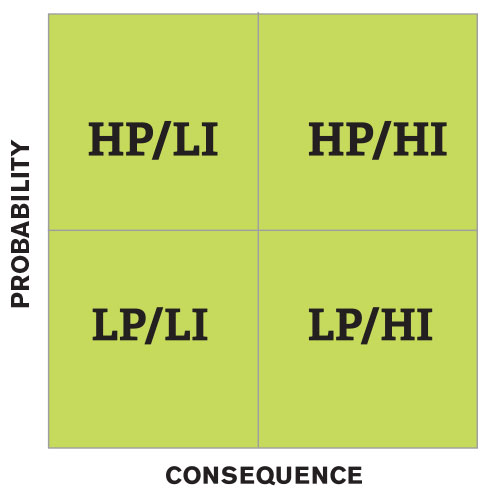
Having had the opportunity to train thousands of managers and staff over my 30 years as a consultant, I have always emphasized a key approach to project management: utilizing before action reviews (BARs) and after action reviews (AARs). This article will detail the benefits of these processes and how you can start using them on your projects.
The benefits of applying BARS and AARs to your projects are enormous and include more efficiency, fewer surprises and a better end product. However, for all the merit the process can provide those who make successful use of it, it still has the potential for failure if it’s not followed closely.
Some of the hurdles to expect from this process include lack of commitment to provide the time, lack of understanding of the advantages, a lack of fully understanding the process and steps, a propensity for taking shortcuts to expedite to “just get it done,” being unable to assess the best mix of risk versus reward in examining critical elements, and a lack of contingency planning for the critical elements.

Before Action Review
BAR means determining your project’s path to completion and anticipating potential showstoppers or bottlenecks that may cause problems. It also means having a contingency plan on reserve in the event of Murphy’s law: Anything that can go wrong will go wrong.
Having a contingency plan means you thought through those elements of the project that could be problematic and have a at least a high-level plan in reserve in the event tasks or project elements fail to occur as planned. Here are the key learnings for BARS:
- Learning sequencing of tasks to understand task dependencies, concurrent versus parallel tasks
- Ability to identify critical elements
- Learn to weigh risks based on consequence versus probability —
- not everything has the same risk factor
- Develop an appreciation of
- contingency planning
- Anticipate what critical elements could go wrong and develop a Plan B
- Develop at least an outline of a Plan B
- Visually think through the project as a success and then break it down into what made it successful and apply reverse logic to ensure that success
- Learn to think about resource requirements for every single step and the lead times needed for each
- Conduct Critical Reviews for major projects to assess progress and issues
- Use the concepts of the PDCA Cycle (Plan-Do-Check-Act)
- Visual mapping that can show lateral movement or activity — hard to do
- with a traditional Gantt chart which is too linear
A good approach is to run through the major tasks and elements and conduct a risk assessment using a simple risk grid. A quick assessment of the level of risk established on probability (likelihood based on history or other factors) versus consequence (impact of occurrence). You can see an example of this in Figure 1.
When we speculate the likelihood of something happening, usually from history or a series of events, compared to the consequence of the problem, we can assign it a value on the grid. For example, something with low probability and low impact would be low probability (LP)/low impact (LI) (bottom left quadrant).
However, if it was impactful but not likely it would be low probability (LP)/high impact (HI). Comparing the probability of a fire versus a structural cave-in is an example where both are high impact but one, the fire, is far more likely to occur.
As the probability increases, again you are comparing the consequence or impact. HP/LI would be very likely occurrence but low impact while HP/HI would be likely to occur and significant impact if it did. For those project elements that could fall in the top right quadrant, consider developing a contingency or Plan B.
For example, if a critical path element or task is for a vendor to have a 75-foot bucket truck on a jobsite at 9 a.m. Friday morning and historically he has been late, what is your reserve plan, so people aren’t idlily standing around? It was a major task or showstopper, should we have thought of reserve lift equipment?
Do we need a full 75-foot lift or could something shorter work? How quick can we access a backup? Since the vendor has experienced repeated lateness to jobs, should we use an alternate? Should we plan to remind them the night before and early that morning of their commitment and the importance of timeliness?
Remember, this is a HP/HI task, so having a backup could make sense.
After Action Review
AAR is a structured review or debriefing process for analyzing what was the mission, what happened, why it happened, and how it can be performed better the next time. This has been used in the military for generations to establish essential lessons after major activities. I recall it being standard modus operandi in our infantry unit in Vietnam in the late 60s and early 70s.
The chief element is the lessons learned or what would I do differently next time. It is important to perform the debrief while the memory is fresh or within 48 hours of completion. Our memories erode quickly, especially with the numerous distractions we face daily.
Completing a solid debrief allows us to identify the repeatables (those tasks that work that we will do again) and the chargeables (those tasks that failed, for whatever reason, that should be altered while your memory is fresh).
Taking corrective action on the chargeables, while the paint is wet, is crucial in making modifications before our memories fade and we are diverted by other tasks and projects. Here are the key learnings for AARs:
- Debrief as quickly as possible after the project — memory fades quickly
- Get those on the front line to provide feedback as much as possible to capture the issues, delays, etc.
- Debrief without judgement — no defense or excuses — just gather the facts and perceptions
- Separate causes from effects — some are symptoms, and some are the actual sources of the problem
- Use a structured approach to
- determine root causes versus jumping to conclusions
- Two heads are better than one because they bring different perspective and viewpoints — engage others in the
- post-mortem analysis
- Nothing is sacred — be prepared to address whatever issues caused delays and address them
- Use a form to capture to examine later, you need a permanent record
- Always summarize lessons learned – what did we learn and what will we
- do differently
- Develop an action plan while your memory and energy are fresh
Remember, it isn’t just planning that makes a great project but, rather, the ability to flex with changes both before and after.
